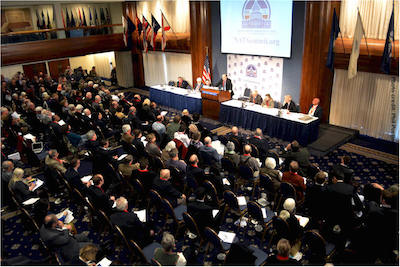Israel, Passive Aggression & the New York Times
May 16 2014 / 5:29 pm
By Yousef Munayyer.
The Jerusalem Fund – Arab villages were destroyed. The state of Israel destroyed Arab villages.
Do you see the difference there? The first sentence is in the passive voice and absent of any agency. Who destroyed the villages? We are not told in the first sentence. All we are told is that the villages “were destroyed.” The second sentence does not suffer from this ambiguity. It makes clear who the active agent is, in this case, the state of Israel, and that it “destroyed Arab villages.”
The difference seems simple and straightforward enough. For the purpose of clarity, you’d think that in writing about such a matter, a journalist would choose the second sentence to make perfectly clear to the reader who did what and to what that act was done. That isn’t the case with the New York Times’Jodi Rudoren.
Last week, on May 8th, we posted about how the New York Times failed to cover two significant stories happening during Israeli holidays. One was the mass gathering and Nakba commemoration in Lubya and the other was the release of the iNakba app by Zochrot. Well, Jodi Rudoren eventually wrote about the iNakba story for the New York Times (although to the best of my knowledge it did not appear in print in the U.S. edition but only in the International New York Times and online). What struck me about the story was the linguistic acrobatics that were employed in what can only be understood as an attempt to hide Israeli agency.
Jodi writes: “I saw scores of villages destroyed or abandoned as Israel became a state 66 years ago” and “The app provides details like the date in 1948 each village was occupied, by which military brigade, and Jewish settlements before and since.”
Scores of villages destroyed? Destroyed by whom? The date each village was occupied? Occupied by whom? By which military brigade? Which military?
Unless the reader is familiar with the history, they are not told the answers to these questions. Why go to this extent to hide Israeli agency? As far as the reader is told, these events occurred “as Israel became a state” but what the Israeli state has to do with these events isn’t made clear. The fact of the matter is, and this really isn’t a disputed fact either, the Israeli state engaged in a massive campaign of destroying structures in these villages during and after the war. This was done to ensure the refugees would have no homes to return to. It was, in effect, the enforcement of ethnic cleansing.
We’ve written in the past about how the New York Times’s present day Nakba narratives in news stories does not even correspond with its reporting from the time. Yesterday morning, two Palestinians were killed by Israeli fire at demonstrations in Beitunia on Nakba day. When events like this occur onNakba day, as they did in the Ethan Bronner piece discussed in the link above, some description ofNakba day and what it means are usually included in the reporting. By the afternoon, there was no reporting in the New York Times of the events so I asked on Twitter whether they will be covering it. Jodi Rudoren responded:
Well, Jodi delivered on her promise. Again she writes in this story about what Nakba day is:
Two young Palestinian men were killed Thursday in clashes with Israeli security forces during a demonstration for Nakba Day, which commemorates the destruction of Arab villages in battles that led to the establishment of the state of Israel in 1948.
Don’t read that too many times, you might get dizzy. She later writes, “Palestinian leaders made speeches about never relinquishing the rights of millions of refugees and their descendants to return to the land where the destroyed villages stood.”
Do you see a pattern yet? Why does Jodi constantly write about this subject in ways that avoid describing Israeli agency in the events? Did these villages destroy themselves? No. Nor were the villages destroyed in “battles.” Certainly many of the villages came under attack or were the sites of battles, some even suffered significant damage, but the destruction of the homes to the point of leveling happened for the most part after the villages were depopulated. In many cases, refugee flight occurred during bombardment or even in fear of oncoming bombardment, but the razing of structures to the ground was done systematically afterwards.
Someone wrote recently that when it comes to writing on this topic, “the danger is writing so defensively — to avoid skewering by one side or the other — that regular readers have to suffer through stilted sentences and tit-for-tat terminology.” Or even worse, they may not even learn pertinent information.
Jodi should take heed of this warning and apply it as she writes about the Nakba. Say things plainly. Israel destroyed these villages. Was that so hard?


